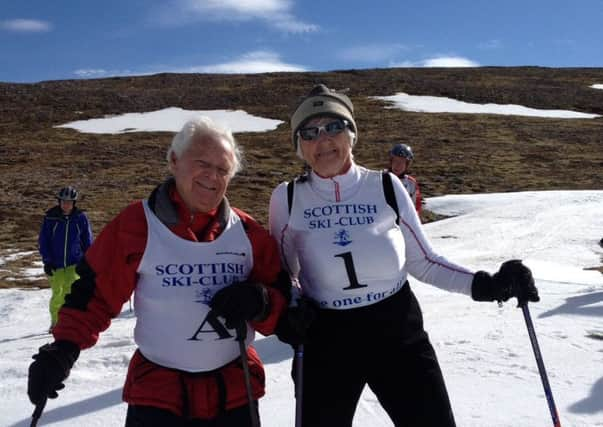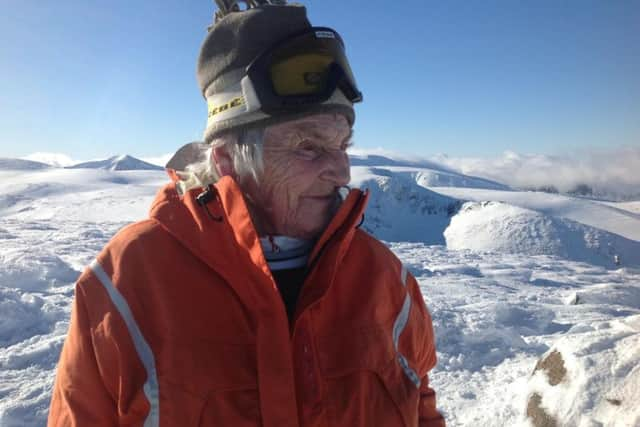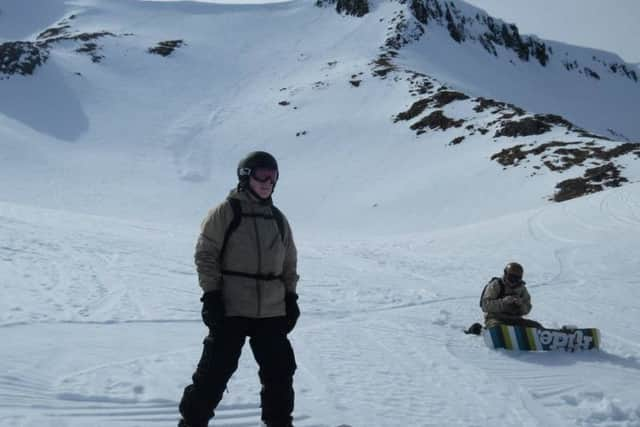Silver skiers: Why the over 60s are hitting the slopes


IT MAY not be immediately apparent, particularly behind goggles, helmets and multiple layers of ski gear, but a sizeable proportion of visitors to Scotland’s ski slopes are over the age of 60. And it certainly won’t be their skiing style that betrays their advanced years, as having honed their skills over several decades, many have better technique than those a fraction of their age.
Angela Anderson of Snowsport Scotland and Glencoe Ski Club says “a good chunk of Scotland’s season pass holders are over the age of 60”, and Rona Hulbert, president of the Scottish Ski Club, adds that the majority of their members fall into that age bracket.
Advertisement
Hide AdAdvertisement
Hide AdFreed from the shackles of work, and with fewer family commitments and financial outgoings, this generation of active pensioners are intent on enjoying themselves, and for many, that involves hitting the slopes. With people now generally reaching retirement age in good health and with a high level of fitness, many are able to ski and even snowboard well into their sixties, seventies, eighties, and beyond.


Myrtle Simpson is a prime example of someone for whom retirement hasn’t meant hanging up her boots. The 85-year-old can regularly be found on the slopes of CairnGorm, just a 20-minute drive from her home near Aviemore.
Originally from Hampshire, Myrtle, an avid mountaineer, moved to Fort William at the age of 21 to be closer to the mountains. After learning to ski on the old golf course at Spean Bridge she caught the bug, and when not working as a radiographer, spent most of her time in the mountains as one of the pioneers of Scottish skiing. Not only was she instrumental in establishing the Scottish ski scene, but she also documented the story in her book Skisters: The Story of Scottish Skiing.
When the main hub of Scottish skiing shifted from Glencoe to CairnGorm in the 1960s, Myrtle and her family moved to near Aviemore to be closer to the action, and she’s lived there ever since.
Her four children, and their children, have also all been heavily involved in skiing, and her daughter Rona is president of the Scottish Ski Club, a position that Myrtle herself held back in the 1970s. Despite having handed over the reins to her daughter, Myrtle is still heavily involved in the club and credits it, in part, for keeping her skiing for such a long time; something that she’s keen to encourage others of her age to do too.


“Don’t give up skiing because you can’t go so fast or take on the red runs,” she says. “I ski for the ambience. The mountain air. To step out of a cable car and see the view. To be part of the excited throng as they tighten up their boots at the top. To feel the movement as you take the first turn. Join your local ski club and work at picking up a group of pals – younger than you, of course.”
She also makes the point that skiing is much easier to do now than it used to be. “The lifts are better, facilities for grooming much improved, and the equipment is much lighter and easier to use. You’re taken to the top – all you need to do is get down.”
However, she’s all too aware of the need to adapt to take account of her advanced years. Whereas previously she did a lot of ski touring and backcountry skiing, these days she sticks to well groomed runs, avoids Poma and T-bar lifts like the plague, and only goes up the hill when conditions are good.
Advertisement
Hide AdAdvertisement
Hide AdThat said, she still competes in the Masters ski races, as well as those run by the Scottish Ski Club, in which she vies for the title of fastest pensioner with 95-year-old George Stewart.
George, the reigning champion, first learned to ski when posted in Italy during the Second World War. Returning home to Scotland after the war, he took to the slopes of Glencoe and CairnGorm to pursue his new-found hobby, just as skiing was starting to take off there. From that point on, when not working as a forester near his home in Perth, he and his family would spend as much of the winter as possible at Glenshee and CairnGorm, as well as a couple of weeks in the Alps. George has also been heavily involved in the administration and development of Scottish skiing over the years, presiding over the Scottish Ski Club, Scottish National Ski Council and as vice president of the National Ski Federation of Great Britain (now British Ski and Snowboard).
Although he only skis around five days of the season in Scotland now, when conditions are at their absolute best, he enjoys it as much as ever. He also still spends a week in the Alps with his son, former Olympic skier Alan Stewart (recently turned 60 himself) and his family. When asked if he ever worries about hurting himself, he’s quick to dismiss the suggestion: “I have good technique and ski more slowly and carefully than I used to, so I don’t fall.”
However, George is philosophical about how much longer he’ll be able to continue skiing and just takes each year as it comes. “You never know what’s around the corner, but at the moment I feel able to ski again this winter,” he says.
At 63, primary school teacher Andy Sturrock is a veritable youngster by comparison. He’s also never donned a pair of skis in his life, preferring to slide down mountains attached to one plank instead of two. However, it hasn’t always been that way. Until five years ago, the closest Andy had got to snowsports was sledging down a hill in his hometown of Dundee. It wasn’t until he moved to Fort William in 2001 that skiing or snowboarding even appeared on his radar.
It was Andy’s snowboarder son, Drew, who convinced his dad to strap on a board for the first time, at the age of 58. Armed with Drew’s old board, Andy took to the nearby slopes of Nevis Range and, with the exception of one two-hour lesson, taught himself to ride. Despite spending much of his first winter falling over – gouging chunks out of his board and getting concussed in the process – he persevered until he cracked it.
It wasn’t long before Andy was hooked, and with the Quad Chair at Nevis Range tantalisingly visible from his window, he gets up there as often as possible. Despite having convinced a friend to join him in his new pursuit, he often rides alone, but when Drew and his brother Rudi come to visit, the three of them hit the Back Corries. Andy describes dropping into Summit Gully as “pretty scary”, particularly as he suffers from vertigo, but says it’s definitely worth putting himself out of his comfort zone for.
Not that his comfort zone is a place where Andy spends much time. In his short snowboarding career, not only has he been concussed, but spent 18 weeks in plaster after tearing his Achilles tendon while snowboarding. Far from allowing either of these incidents to put him off, his ethos is: “If you don’t fall, you’re not trying hard enough.”
Advertisement
Hide AdAdvertisement
Hide AdHe does know his limitations, giving the terrain park a wide berth, for one. However, he continues to push himself, and be pushed by his son. And with retirement just around the corner he can’t wait to spend more time on his board:
“For me snowboarding is, to quote an old Eels song, ‘novocaine for the soul’. I’ve even got that written on my helmet. I’m not on my deathbed yet, so will definitely keep doing it for as long as I can. I’m not going gentle into that good night”.
Twitter: @ridingswitch